THE SECRET TO KEEPING YOUR TREES IN GREAT HEALTH YEAR-ROUND
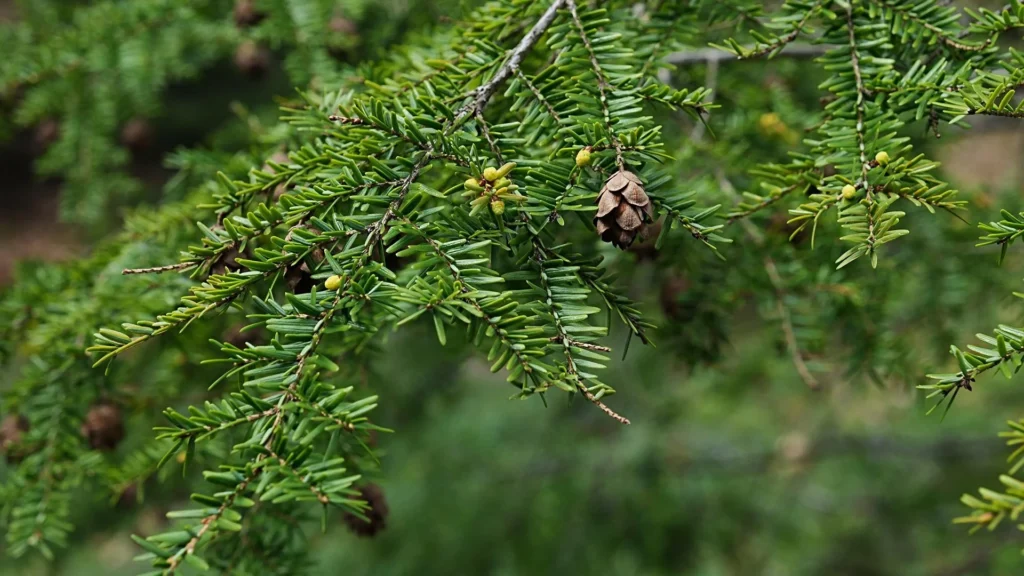
With trees on your property providing shade and unmatched charm with their blooms and lush foliage, keeping them in good health is very important. We’ll let you in on the secret to a healthy tree: a tree fertilization program. Whether your trees are starting to deteriorate from diseases or you want to be proactive, this kind of program will positively impact your trees. Signing up for a tree fertilization program accompanied by pest and disease treatments locks in your trees for multiple applications throughout the year. A professional tree fertilization program also ensures your trees are looked after by experts who know what they are doing. Keep reading to learn how tree fertilization programs benefit your trees. Sign up for a tree fertilization program. The short and most direct answer to how you can keep your trees in excellent health year-round is a tree fertilization program. Signing up for this kind of program ensures your trees regularly receive fertilization, giving them essential nutrients to thrive and be healthy. While the soil can supply these, your trees might require certain nutrients in specific quantities, which the soil may lack. Tree fertilization is not a one-time thing. Your trees should receive nourishment several times a year, during moments when they would benefit the most from the fertilizer. Hydrate your trees regularly to ensure they are properly absorbing the nutrients from fertilizer. What should you look for in a tree fertilization program? Not all tree fertilization programs are created equal. Before you sign up, make sure it provides a comprehensive plan of action that will nourish and treat your trees for insects and diseases as well. To help you narrow down your search for the right program, here are the crucial things a tree fertilization program should have: Multiple fertilization treatments throughout the year: As mentioned, tree fertilization is not a one-time thing. Treatments primarily include nitrogen, phosphorus, and potassium, all of which your trees need at different times of the year. These macronutrients stimulate robust growth, improve the vigor and appearance of your trees, and promote strong root development. By spreading the application throughout the year, your trees can efficiently absorb the nutrients and enjoy their full benefits. Preventative insect treatments: Being proactive when it comes to insects is crucial. With preventative insect treatments, your trees are protected from insects such as bagworms, mites, and emerald ash borers. Like fertilizer, this treatment is also sprayed multiple times throughout the year to avoid any issues with insects that can destroy your perfectly healthy trees. Disease treatments, if necessary: Trees are vulnerable to various diseases that can be triggered by stress, drought, fungi, root damage, and pollution. While infections can be prevented, your tree fertilization program should be ready and equipped should your trees require treatment from common diseases like cedar-apple rust, oak wilt, and Dutch elm disease. Why Your Trees Need Professional Fertilization In this day and age of life hacks, DIY, and tricks, a professional tree fertilization program is what your trees need to stay in tip-top shape. When a professional looks after your trees, their trained eye can easily spot early signs of issues, allowing them to take immediate action before more damage occurs. Experts also know the correct amount and timing of fertilization treatments. Overfertilizing is a possibility when you decide to DIY the treatment. This puts your trees at risk of developing shallow and weak roots. With professionals efficiently and effectively applying fertilizers, you save time and money trying to solve issues you may encounter if you decide to apply the treatment yourself. Call today to schedule our tree and shrub care services! The secret’s out! A tree fertilization program is the key to keeping your trees in great health year-round. Treatments throughout the year provide your trees with the essential nutrients they need for robust growth. You don’t have to look further as our team provides a tree fertilization program that includes insect and disease control treatments. We provide our services to properties in Independence, Gladstone, North Kansas City, MO, and nearby cities. Call us today at (816) 886-1121 to get an estimate!
WHAT’S DESTROYING MY LAWN? MOLES VS VOLES
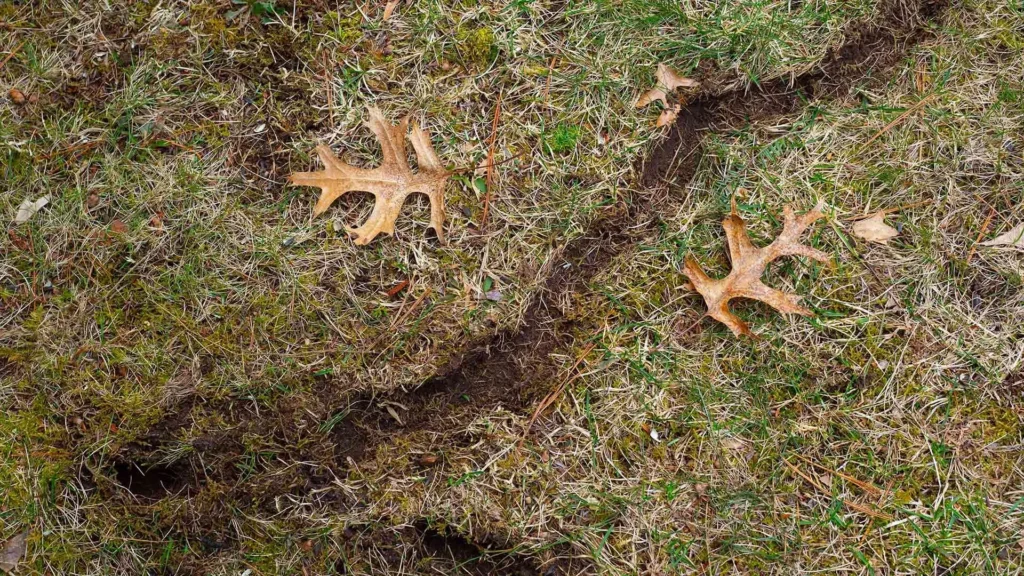
Moles and voles could be your lawn’s biggest enemies. Although they are commonly confused due to their similar names, the damage these two lawn pests cause is equally harmful. Moles feed on insects like grubs and earthworms underground, creating tunnels and soil mounds as they hunt for food. While they scour your lawn for insects, they disrupt the root system of your turf. Meanwhile, voles will munch on the roots of your grass, creating runways throughout your yard in the process. Don’t worry, as treatment options like liquid fence repellant are available! Keep reading to learn more about the damages caused by moles and voles, and how you can keep them away from your property. How Moles Damage Your Lawn If you’ve noticed mounds of soil on your lawn with irregular-shaped tunnels, then it’s likely your lawn is being pestered by moles. Moles are underground-dwelling insectivores, which means they feed on insects, grubs, and other soil organisms. They damage your lawn by digging around and looking for insects. As they hunt for food, they create tunnels and displace the soil in their way, hence the volcano-shaped soil mounds. They don’t feed on your grass, but they may damage the roots of your turf as they dig their way through your lawn. These insectivores are most likely to appear after rain, as they prefer moist and loamy soils. If you think their tunnels are bad enough, wait until they start to mate! Moles dig deeper during the mating season, which starts in February. The tunnels they create help aerate your lawn, but you don’t really want to see the hideous soil mounds on your property. If you notice more and more moles on your property, then that could indicate your lawn has a grub problem. How Voles Damage Your Lawn While voles sound the same as moles, they are different. Voles are a part of the rodent family, and their herbivorous diet mainly consists of the roots of your grass. They damage your turf by gnawing on the roots and stems of your grass, killing your turf. Like moles, they will dig their way through your lawn, creating golf ball-sized holes as they exit the ground. However, they spend most of their time feeding above ground. Voles don’t create soil mounds but instead produce runways on your lawn where they passed through. You should be concerned when you notice these vole runways on your property. Voles are prolific, meaning they can produce many baby voles per year. Grassy areas and woodpiles are ideal spots where they seek protection. Voles don’t hibernate, meaning they can actively ruin your turf underneath that white blanket of snow. Taking Action Against Mole & Vole Damage We understand how confusing it can be to differentiate moles and voles. They cause different damage to your lawn, but treatment options are available to tackle these lawn pests. You can take action against moles and voles through these methods: Chemical repellants: A liquid fence is usually the most efficient way to get rid of moles and voles. It works by coating their food source with a solution that will make it taste bad. Baits and traps: You can also opt to install traps throughout your lawn to catch these bad guys and then set them free somewhere far from your property. However, these traps are unattractive to look at, and they may not be as effective in reducing the mole and vole population in your yard. When you start to notice signs of damage on your lawn, like soil mounds and runways throughout your yard, it’s best to consult a professional. While most treatment options for moles and voles are usually the same, professionals will know how to properly apply these treatments so these pests won’t come running back to your lawn. Contact our team today to get rid of pesky moles and voles on your property! Sam’s Turf Care, a trusted lawn care services company, has just the right thing to get rid of moles or voles, whichever of these two are ruining your lawn. Our mole and vole repellant treatments use an organic-based liquid fence solution to make insects and grassroots unpalatable to these animals. Because the treatment is organic-based, it won’t hurt your lawn or your pets! If you own a property in Independence, Gladstone, North Kansas City, MO, or nearby cities, call us today at (816) 886-1121 to get an estimate for our mole and vole repellant treatments.
CAN I GET AWAY WITH SKIPPING LAWN AERATION THIS YEAR?
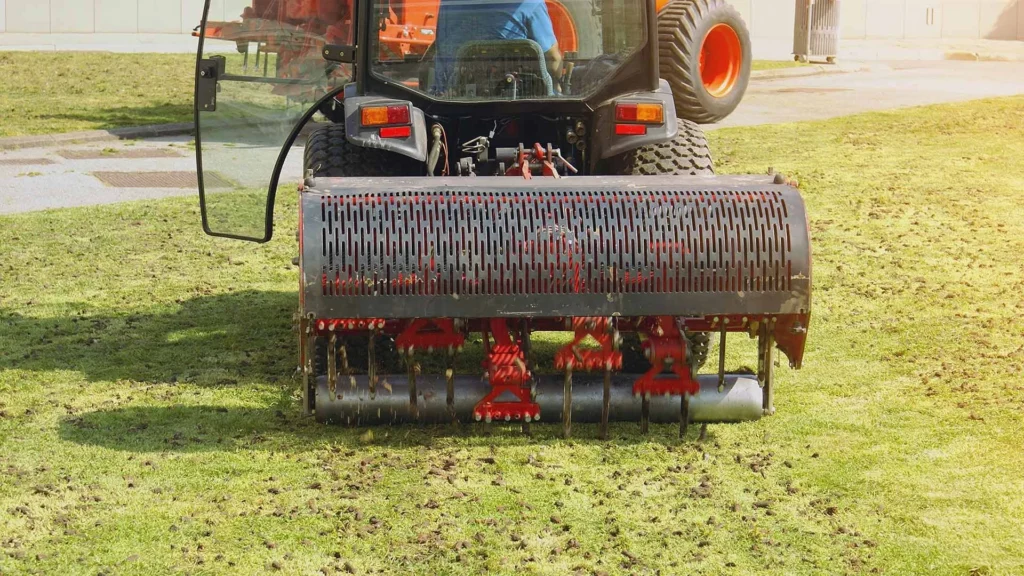
Lawn aeration is sometimes overlooked but, in fact, it is the unseen hero behind a thriving lawn. Although it is not as well known as fertilization or weed control, aeration is just as important. We understand that this service could seem like just an added expense that you’re looking to eliminate, however, we highly suggest thinking twice before doing so! As the fall season approaches us, it’s time to start thinking about scheduling core aeration. Core aeration will not only combat issues created by the heavy foot traffic of the summer, but it will also prepare your grass for the upcoming winter season. It is best to get this service scheduled between September and October to ensure the best results. However, if it’s well into November and you forgot to schedule, no worries! Liquid aeration can come to the rescue. Core aeration heals your lawn from the summer stress. Lawnmowers and increased foot traffic can cause a lot of thatch build-up and compacted soil. So, come fall time, your lawn is probably struggling to get access to sunlight, water, and essential nutrients. Core aeration benefits your lawn in the fall by acting as the reset button for your turf each year. Core aeration will poke tiny holes into your soil, thus eliminating the thatch build-up and loosening your soil. This allows for essential nutrients to reach your roots with ease and greatly strengthens your lawn. Core aeration prepares your lawn for the winter season. The winter season is very stressful for your grass due to the lower temperatures. If your lawn isn’t aerated in the fall, that means that it is still struggling to get the essential nutrients that it needs to become strong enough to fight off the winter stress such as lawn diseases and insect infestations. By aerating in the fall, your roots will grow strong and deep, thus putting your lawn in great shape to take on the winter and leave you with strong, lush grass come springtime. What should you do if you missed the window for fall aeration? As mentioned above, core aeration should be performed in September-October. If you find that it is the end of the year and you missed the window for fall aeration, we highly recommend scheduling liquid aeration for the spring. The snowfall will only further compact your soil and you will find that, without any type of aeration, your lawn will struggle to bounce back from the winter season. Liquid aeration uses an active ingredient that breaks down compacted thatch and soil. A lawn care team like ours will apply it to your lawn in the spring season. If you did not schedule core aeration for the fall, spring aeration is a great option to help with: Loosening up heavily compacted soil after winter Increasing the retention of water and other nutrients in your grass No need to schedule both core and liquid aeration services. Your lawn only needs one of these treatments annually to flourish! Add core aeration to your fall checklist by calling us today to schedule! Because core aeration is a less popular lawn care service than fertilization or weed control, we understand why property owners might think of skipping it. However, we highly advise against it. Core aeration is just what your lawn needs in the fall season to heal from summer and prepare for winter. At Sam’s Turf Care, we’re in the business of giving TLC to lawns. Since 1985, we have been providing both core and liquid aeration to the Independence, MO area, including Gladstone and North Kansas City. If you’re interested in healing your lawn this season with core aeration, give us a call at (816) 886-1121 to schedule!
4 WAYS DIY PERIMETER PEST CONTROL WILL MAKE MATTERS WORSE
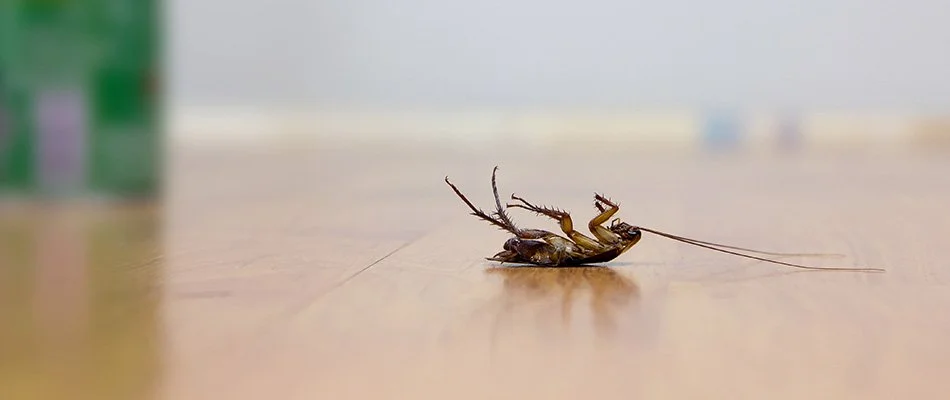
While DIY perimeter pest control is highly tempting, it can make matters worse. There are four reasons property owners run into issues when doing their own pest control. They often 1) don’t know about the common harborage areas to focus on, 2) are unaware of which products are most effective, 3) don’t know how to safely handle the unfamiliar chemicals, or 4) fail to stay on top of treatments. It’s typically a good idea to avoid do-it-yourself pest control especially if the four scenarios above apply to you. However, you don’t want to completely ignore pest sightings near your home’s perimeter either. Instead, it is best to rely on licensed professionals like the ones on our team to safely and effectively eradicate your pest problem. 1. You might not know exactly where your pests are harboring. Different types of pests gather in different environments. If you don’t know where the pests are hiding on your property, you could miss a colony and still have a pest problem after you have spent all of that time and money on DIY pest control. Missing just two pests could start you back at square one with another infestation. Professional companies know exactly where to look for harborage areas. They are trained and educated on how to locate and fully eliminate all colonies to ensure that the infestation does not continue. 2. Different Pests Require Different Products The key to using the right pest control products is identifying the type of pest you’re dealing with. Without this information, you’re just throwing spaghetti at the wall. For example, you could be noticing cockroaches on your property, however, there are many different types of cockroaches and different products for each type. Spraying a pest control treatment that doesn’t actually eradicate your specific pest will only waste your hard-earned time and money. Relying on a professional pest control company is your best bet because the technicians undergo extensive training on the best products to use to fully eradicate many types of pests. 3. Spraying Unfamiliar Chemicals Is Dangerous Spraying unknown chemicals is a safety hazard and could put you, your family, your pets, and your lawn at risk. The best way to experience the intended results is to make sure the person applying the pest control treatment understands the ramifications of each product they handle. Professional pest control technicians typically have years of experience handling these products and know exactly how to create the safest environment during the application process. 4. You Must Keep Up With Treatments Once you begin applying any type of pest control, it’s important to know when and how often to use that particular product to keep your property protected. That’s because pest control isn’t a one-off treatment.Perimeter pest control demands ongoing treatments at specific intervals. Failure to take this into account often results in a prolonged infestation. For example, one product may only last two to three months, while another might continue to work for much longer. Additionally, there are times when the severity of the problem determines the treatment frequency. By working with a professional pest control technician, you can rest easy knowing that your property is getting enough treatments in the correct timing intervals for the best protection. Professional pest control companies allow you to “set and forget” your pest control treatments, as they will remember when to retreat your property so that you don’t have to. Avoid these DIY mistakes altogether. Contact us to schedule our perimeter pest control service today! As perimeter pest control service providers, our job is to make sure the pests you see in your home or business don’t multiply into a full-blown invasion. If you believe your pest problem has already reached the infestation stage, don’t worry. Our pest control specialists can craft a solution to exterminate serious pest problems once and for all. Don’t leave your property’s safety up to trial and error by trying to tackle a pest problem on your own with a DIY attempt. If your home or business is in Independence, Gladstone, North Kansas City, or a surrounding area in Missouri and you’re experiencing pest problems, call us today at (816) 886-1121 to schedule our perimeter pest control service.
MOUNTAINOUS MOLEHILLS IN YOUR YARD? WE HAVE THE SOLUTION
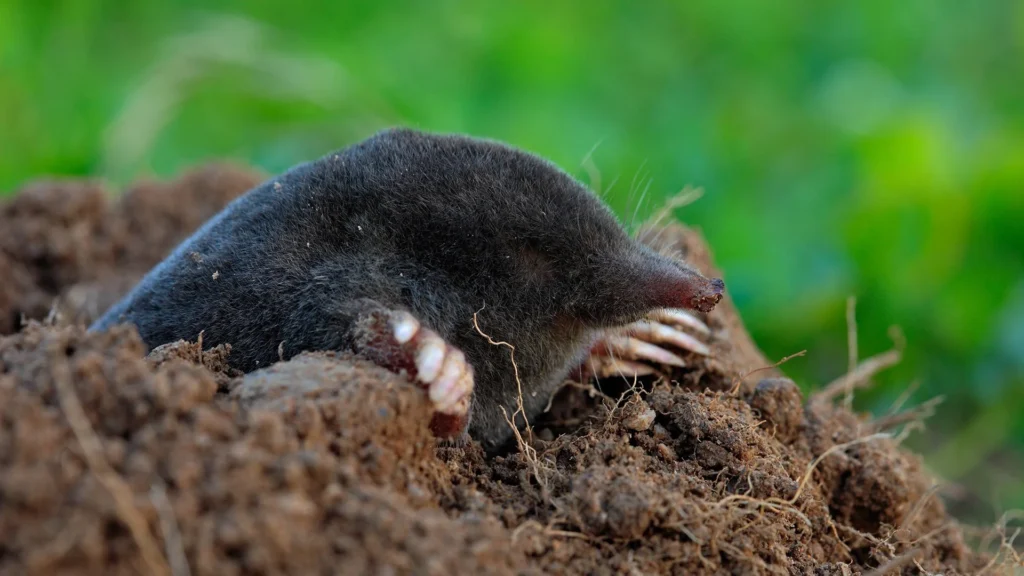
When you have been an attentive lawn owner who has healthy turf and thriving landscape beds, the last thing you want is to have moles tear up your lawn as they look for food. Moles are small mammals that spend most of their time underground, digging through the soil looking for insects to eat. They can cause a lot of damage to lawns as they are known to tear up grass and destroy root systems as they dig. You can prevent them from rummaging your lawn for insects by making their food source unpalatable, among other methods. Keep reading to learn more about moles and what you can do to keep them away from your yard. What is a mole? Moles are mammals that live underground where they find insects to eat. They look like rodents with bodies covered by a velvet-like coat. Moles have prominent snouts and short arms. They have long claws which they use to dig tunnels. Moles are insectivores, meaning they feed on insects. They look for insects by creating tunnels and chambers on your lawn, producing mounds of soil or molehills in your yard. Molehills are volcano-shaped mounds of dirt that can be up to 24 inches in diameter and 8 inches high. These molehills are the first sign of moles on your property. The presence of moles on your lawn may signify a more significant issue, like insect infestations. This is because moles like to feed on these insects: Earthworms Grubs Centipedes Millipedes Larvae Moles can dig up to 18 feet in one hour. How do moles damage your yard? As moles dig tunnels in your yard they cause damage by tearing up the roots of your grass. This can cause serious damage to your lawn, as the grass will die in areas where the roots have been destroyed. Aside from the damage to your lawn, they also leave large molehills and tunnel markings on your lawn, which will make your lawn look torn up and unattractive. The tunnels moles create help aerate your lawn and improve drainage. However, their damage still outweighs the benefits moles provide. Controlling & Preventing Moles in Your Yard Mole infestations can be controlled and prevented. The key to stopping them from invading your yard is to remove their source of food like grubs. Removing them will not only keep moles away but will also help save your turf from possible grub damage. While earthworms can be beneficial to your lawn, you can make them unpalatable to moles. A chemical called liquid fence is an effective deterrent, and it works by sinking through the soil and coating the insects to make them taste sour. Once the moles discover how nasty the insects in your yard are, they start looking for a different place to find their meals. We provide mole repellant treatments that are safe for you and your family. Contact our team today to sign up! Moles are animals that can cause serious damage to your turf by creating tunnels as they search for food. At Sam’s Turf Care, we provide mole repellant treatments using an organic-based product called liquid fence that will make the insects on your lawn taste nasty to moles. Because this is an organic product, it won’t affect you, your family, and even your grass. Plus, this product won’t harm these critters, it will just deter them from making your property their home. Our services are available to residential, commercial, and HOA properties in Independence, Gladstone, North Kansas City, MO and throughout the nearby communities. Give us a call today at (816) 886-1121 to sign up for our mole repellant service.
TURF WEED TERMS TO KNOW
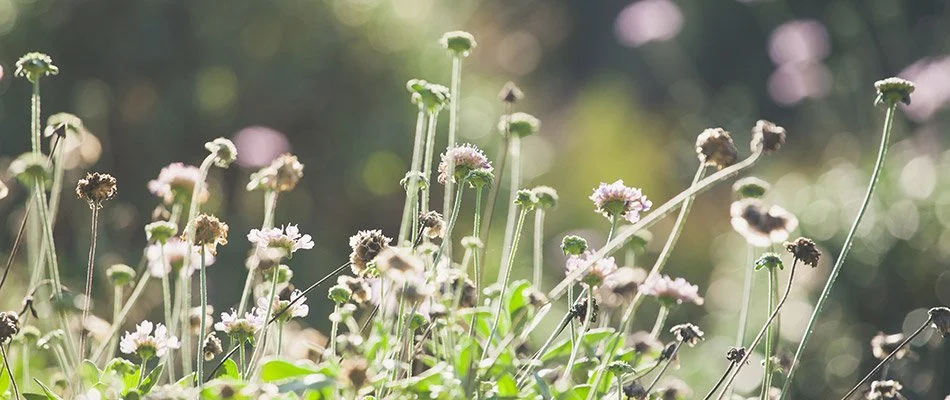
Turf weeds are unwanted plants that disturb your lawn. They not only look messy on your property, but they also steal essential nutrients, sunlight, and water from your grass, disrupting its growth and quality. Learning the terms associated with turf weeds can help you identify them, understand their life cycles, and eliminate them early on when they are easier to control. These terms include the types of harmful weeds (noxious, invasive), plant parts that are responsible for their continuous growth (taproot, rhizome), and more. Knowing these terms is necessary for developing an effective weed management program and choosing the proper time and herbicide application. Turf Weed Terms Include Herbicide, Rhizome, Broadleaf, Taproot & More A basic understanding of the types of turf weeds comes in handy when identifying and selecting weed control treatments. Herbicide – This is a pesticide application that will kill unwanted plant life. Herbicides can be applied through either pre-emergent or post-emergent treatments. Pre-emergent herbicide treatments stop weed seeds from fully germinating, preventing them from ever poking up out of your soil. Post-emergent herbicide treatments control the weeds that are already fully grown out of your soil. Noxious – Noxious weeds are harmful threats to crops, ecosystems, and landscapes. These threats can include poisonous weeds, rash or allergens, and cost-prohibitive actions to control the weeds. Noxious weeds can be annual, biennial, or perennial plants. Examples of noxious weeds include bittersweet, knapweed, knotweed, and poison ivy, among others. Invasive – This is a variety of weeds that have been introduced from other regions and spread persistently in their new habitats. They take over an area of your lawn or landscape and can spread quickly and out of control. Taproot – Taproots are long roots that grow downward and where all the other parts of the plant grow from. They are the first roots to appear from the seed and remain the largest, central root of the plant. Carrots, parsnips, radishes, beets, and dandelions are all considered taproots. Rhizome – a horizontal root that grows under the soil from a central root system. It will produce shoots that become new plants. It is difficult to eliminate an invasive plant that uses rhizomes to multiply because if a rhizome is left in the soil, a new plant can emerge. This is because they do their spreading underground. Plants that spread quickly with the help of rhizomes include ginger, stinging nettle, horsetails, and poison ivy. Perennial – This is a type of weed that can live for many seasons and will most likely have a vast root system. Perennial weeds do not die at the end of the growing season and produce new growth over a few seasons. Dandelion and brambles are examples of perennial weeds. Annual – Annual weeds only survive one growing season. Some varieties produce thousands of seeds that will grow the next year. Summer annual seeds take root in spring, grow in spring and summer, and then die in the fall. Winter annual seeds develop in fall, winter, and early spring, then die in late spring. Examples of summer annual weeds are crabgrass and Russian thistle, while winter annual weeds include annual bluegrass and prickly lettuce. Broadleaf Weeds – This is a family of weed varieties with flat, wide leaves and netlike veins. Dandelion and thistle are examples of broadleaf weeds. The broadleaf term is used to distinguish them from other weeds, which is useful when choosing the right herbicide treatment to control them. Grassy Weeds – These are weeds that grow throughout your lawn and blend in with your grass, hence their name. It can be tough to identify them, so it is best to reach out to a professional team like ours to help you identify if you have grassy weeds. The herbicides used for weed elimination depends on if you are dealing with broadleaf or grassy weeds. Got weeds? Let us tackle these pesky invaders – call us today! Knowing what type of weeds are growing on your lawn and their life cycle will help you choose the beth method for elimination. At Sam’s Turf Care, we have been identifying and eliminating weeds in the Independence, Gladstone, and North Kansas City, Missouri areas since 1985. Call us today at (816) 886-1121 to schedule our weed control treatments today!
WHITE GRUBS = BROWN LAWNS

Grubs can be quite destructive to your lawn once they hatch. It takes about two weeks for the larvae to hatch, and then they will start to cause damage to your yard. These white, c-shaped larvae are voracious eaters, eating on the roots of your grass until you are left with brown patches all over your lawn. One of the tell-tale signs of a grub infestation is when your grass feels spongy and rolls up like carpet because there are not any roots anchoring it to the ground. There are ways to tackle grub problems once you find them on your lawn. But the best thing to do is to be proactive and use preventative treatments. There are four stages in the life of a white grub. Most grubs complete their life cycle in a year, beginning as an egg laid in the soil by a Japanese Beetle. Adult beetles usually lay their eggs sometime between June to August, and it takes about two weeks for them to hatch into grubs. These white, C-shaped beetle larvae are the ones that will eat their way through the organic matter on your soil, including the roots of your grass. Grubs will eat the roots of your lawn right where they hatched as they grow and need more to eat they will begin to eat their way throughout your property. When the weather gets colder, they will descend deeper into the soil, and come spring; they will feed again until they become a pupa. Eventually, they will come out of the soil as beetles, and this time they will be targeting your landscape, eating the plants’ leaves, flowers, and fruits. Healthy lawns can withstand a few grubs, but there are signs that you should watch for to determine if you have an infestation. There are several ways to determine if you have a grub infestation. Many property owners do not realize that they have a grub infestation until it is already too late. There are several signs that you can watch out for. Brown or yellow patches – there are many reasons why your lawn can have some brown patches, but if you notice them growing, it can mean that you have grubs on your property. If you have more of a round spot, it is more likely a type of lawn disease rather than grubs. Spongy ground – this is one of the tell-tale signs that your lawn has a grub infestation. If you walk around your turf and it feels spongy, this is because there are not any roots to anchor it to the soil. You can confirm by gently pulling the grass to see if it easily pulls up from the soil. Preventative grub control is the best way to treat grub infestation. Call (816) 886-1121 today to learn more about our treatment plans. The best thing to do is apply preventive treatments to your lawn. You won’t have to worry about grubs because the treatment will stop any eggs from hatching, thus preventing any damage to your lawn caused by grubs. Here at Sam’s Turf Care, we have over 35 years of experience in the field of lawn care. We always strive for excellence in all our services, and we can guarantee that we will deliver the service you expect from our company. We offer grub control treatments to residential and commercial properties in Independence, Gladstone, North Kansas City, and surrounding areas in Missouri. To eliminate any fear that your lawn may be infested with grubs, we have a pre-emergent application that will prevent the eggs from hatching. If you ever find any grubs and pre-emergent application is too late, don’t worry. We still have a post-emergent treatment that will readily kill the grubs in your lawn. Call us at (816) 886-1121 to know more about our grub control services.
